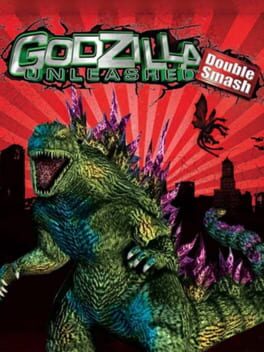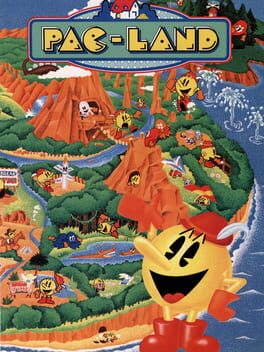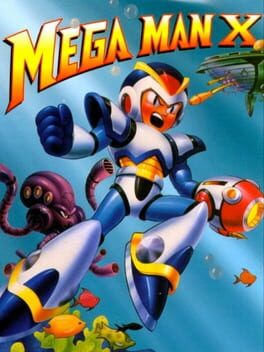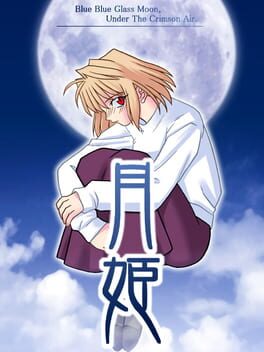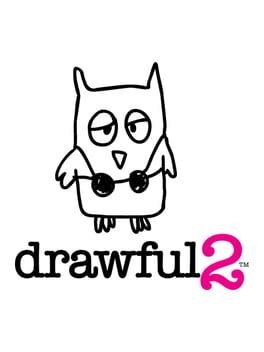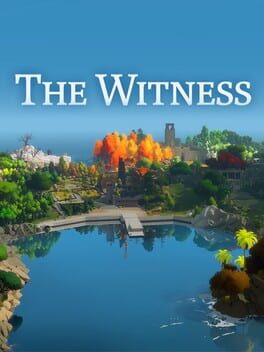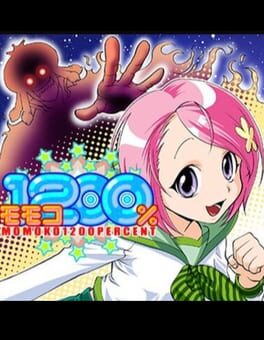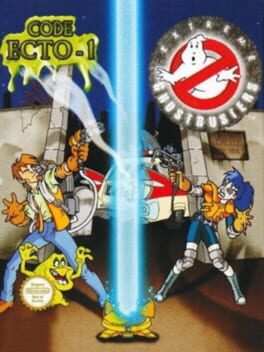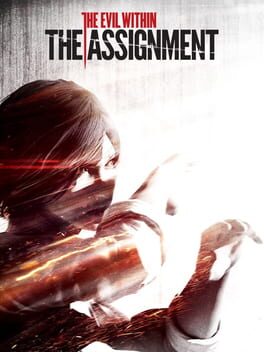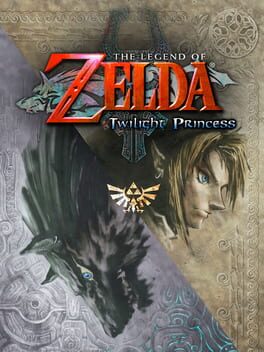1984
1993
Sometimes its reputation is a bit overblown, but it is a damn good game nonetheless.
That is until the final boss. Jeez. Sigma's dog and Sigma phase 1 are very tedious, and Sigma phase 2 is just a pain in the ass. I did the whole game without subtanks but that last phase basically forces you to get them to have a chance at even learning what to do. But the most aggravating part is that each time you want to try again, you still need to go through Sigma's dog and phase 1 which, I repeat, aren't difficult but they are tedious as hell.
Very dumb way to end the game
That is until the final boss. Jeez. Sigma's dog and Sigma phase 1 are very tedious, and Sigma phase 2 is just a pain in the ass. I did the whole game without subtanks but that last phase basically forces you to get them to have a chance at even learning what to do. But the most aggravating part is that each time you want to try again, you still need to go through Sigma's dog and phase 1 which, I repeat, aren't difficult but they are tedious as hell.
Very dumb way to end the game
2000
It's got so many rough spots (specially the eroge scenes, the only good ones are from Ciel-senpai my beloved) that it should be at most a 7/10. In fact, that's what I thought upon finishing it for the first time, but as time went on, I just couldn't get Tsukihime out of my head. It's so iconic, genre defining, and how the story progresses throughout the different routes is still fascinating as it undergoes a complete genre change. Even if it's a late 90s doujin shut-in otaku escape fantasy and sometimes it's borderline Twilight for weebs, I don't care, I love this.
2015
The Beginner's Guide and Stanley Parable share both a problem and it all resides within their post-modern themes. I think both games showcase a lot of what kind of language and opportunities you could use within games that aren't possible in any other medium but both struggle to apply it to something. They are good art studies, not so much art pieces. They lack substance, there's very little that's tangible about them, so what I'm left with is kinda like the creative outcome of someone that went to art school, knows their shit, but has nothing to say. They have the wits, they have a lot of ideas, but they don't have the creativity to apply it to something, so instead they use the post modern metanarrative umbrella to let those ideas break lose without much of a meaning behind them other than being cool ideas.
But that's only half-true, as The Beginner's Guide tries to give it a tangible pseudo metanarrative by being... guided (heh) through different bit-sized games of a fictional developer by a narrator, who spoon feeds the player the meaning of every artistic resource the game showcases while also telling the story of said developer and their relationship. It's kind of a fake documentary in a way and I enjoyed how the concept was executed... on paper.
I hate the narrator with all my guts.
I hate the fact that the game spoon feeds the meaning of everything going on. I hate that every moment that's genuinely well crafted and made me feel something is quickly destroyed by his annoying voice. And I specially don't like his character.
Unfortunately, that's the game. That's the point. Without this frustrating character, the game wouldn't stand on its own because:
1) It's an interactive essay about language and meaning in videogames, and essays need a voice
2) There would be very little going without the voice, as it delivers necessary context. It would be like visiting a Vang Gogh exposition without context of who is Van Gogh and what he was going through while painting those pieces. In a museum the easiest and best solution is to provide the necessary context through annotations or some info panels and then let the visitant wander and let him take it all in and wonder what it all means if he wants to... but in this case it's all very abstract and barren, so it wouldn't retain most people's attention, and also the devs wanted to give you a very annoying guide because...
3) The game is also about the very annoying guide. So in the end it's also kind of a character study that delves in very exciting themes like: what's the relationship between the art analyst and the art? What's the line between artistic intent and personal interpretation? Does anything have meaning at all or is at all a fragment of the analyst's blablablablablablablablablabla...
I swear to good, this is the kind of game that makes you wanna say very mean stuff about millennials being snowflakes and that they should go and touch grass... and I'm a millennial too, but damn. This game is so far up its own ass about stuff that you get through in your first year of art school, and I'm sorry to say this because this is not only about the fictional developer and the fictional narrator... it might be about the real life author of The Beginner's guide and his complex relationship with art and meaning in videogames? Or maybe the way videogame analysts looked at his work when he made The Stanley Parable? Maybe the real meaning of the game is somewhere between all these layers?
I don't know. I don't care. This whole "roleplaying as someone else and having a monologue about art that's secretly about self-loathing" is frustrating to think about.
It's 2 hours so... if you're very impressionable about art discussion and you like this kind of very pretentious post modernism you might like it more than I did. Just like The Stanley Parable, I respect some of the ideas and its use of resources even if they are in service of what's ultimately a post modern uroboros.
But that's only half-true, as The Beginner's Guide tries to give it a tangible pseudo metanarrative by being... guided (heh) through different bit-sized games of a fictional developer by a narrator, who spoon feeds the player the meaning of every artistic resource the game showcases while also telling the story of said developer and their relationship. It's kind of a fake documentary in a way and I enjoyed how the concept was executed... on paper.
I hate the narrator with all my guts.
I hate the fact that the game spoon feeds the meaning of everything going on. I hate that every moment that's genuinely well crafted and made me feel something is quickly destroyed by his annoying voice. And I specially don't like his character.
Unfortunately, that's the game. That's the point. Without this frustrating character, the game wouldn't stand on its own because:
1) It's an interactive essay about language and meaning in videogames, and essays need a voice
2) There would be very little going without the voice, as it delivers necessary context. It would be like visiting a Vang Gogh exposition without context of who is Van Gogh and what he was going through while painting those pieces. In a museum the easiest and best solution is to provide the necessary context through annotations or some info panels and then let the visitant wander and let him take it all in and wonder what it all means if he wants to... but in this case it's all very abstract and barren, so it wouldn't retain most people's attention, and also the devs wanted to give you a very annoying guide because...
3) The game is also about the very annoying guide. So in the end it's also kind of a character study that delves in very exciting themes like: what's the relationship between the art analyst and the art? What's the line between artistic intent and personal interpretation? Does anything have meaning at all or is at all a fragment of the analyst's blablablablablablablablablabla...
I swear to good, this is the kind of game that makes you wanna say very mean stuff about millennials being snowflakes and that they should go and touch grass... and I'm a millennial too, but damn. This game is so far up its own ass about stuff that you get through in your first year of art school, and I'm sorry to say this because this is not only about the fictional developer and the fictional narrator... it might be about the real life author of The Beginner's guide and his complex relationship with art and meaning in videogames? Or maybe the way videogame analysts looked at his work when he made The Stanley Parable? Maybe the real meaning of the game is somewhere between all these layers?
I don't know. I don't care. This whole "roleplaying as someone else and having a monologue about art that's secretly about self-loathing" is frustrating to think about.
It's 2 hours so... if you're very impressionable about art discussion and you like this kind of very pretentious post modernism you might like it more than I did. Just like The Stanley Parable, I respect some of the ideas and its use of resources even if they are in service of what's ultimately a post modern uroboros.
2016
2016
2018
This review contains spoilers
Very interesting exploratory demo. Yes, according to the author's twitter account this seems to be a demo, or at least part of a bigger game that was put on hold. I'm not gonna give this a rating because of it, but it's definitely interesting and I want to see more outside of this segment and the Chapel thing they also released.
The original is a masterclass is oldschool arcade weirdness, so when I found out about about a cellphone sequel I spent an enormous time trying my best to know more about it. How would a sequel play like? On old Japanese phones nonetheless! I've been fantasizing about playing this for the longest time and when I finally managed to play the G-Mode Archives rerelease it was honestly really... jank.
Momoko either goes slow as hell or dashes at mach speed so it's hard to have a grip on her movement; as a player you don't shoot as much as you toggle automated shooting with an option for autoaim (I guess it was probably meant as a speedrun type of experience) but it results in a lack of player involvement so I can't even describe the action of playing it because it was so devoid of everything, yet, it managed to feel like jank anyways. I think they were onto something because with some little arrangements this could've been an interesting experiment and, credit where credit is due, the presentation is pretty damn good for a cellphone of the era. But it's just not really responsive or fun and that's a huge shame.
Momoko either goes slow as hell or dashes at mach speed so it's hard to have a grip on her movement; as a player you don't shoot as much as you toggle automated shooting with an option for autoaim (I guess it was probably meant as a speedrun type of experience) but it results in a lack of player involvement so I can't even describe the action of playing it because it was so devoid of everything, yet, it managed to feel like jank anyways. I think they were onto something because with some little arrangements this could've been an interesting experiment and, credit where credit is due, the presentation is pretty damn good for a cellphone of the era. But it's just not really responsive or fun and that's a huge shame.
Very unremarkable shooter with automated mechanics, spongy feedback, gacha stats and whatnot... Only played for a few hours until I realized that I just didn't care for it. It's not offensively bad but at the same time it's not like it offers anything of worth, specially not for something that is design to consume your time.
Story-wise what this does is delving a little deeper into Kidman's character outside the pitiful four scenes she has in the main game, one of which is a damsel in distress build up to an ass shot (don't worry, this one has an extended ass shot too in the very first scene, just in case you forgot this was a Shinji Mikami game)
Aside from that, it fleshes out a bit of the hidden lore of the main game, but I don't think it says much that a curious player wouldn't have figured out from the well placed breadcrumbs that were already there. In fact, that's what I liked from the main game: it ends so chaotically it forces you to remember all of the out of context oddities of the game and make you piece everything together. This just spoonfeeds the info to you, but... I already knew most of this.
Gameplay-wise this DLC's whole deal was to strip back the game's shooting mechanics and instead delve into the more fragile side of horror games. Avoid confrontation, even with low rate enemies. Lure them out of the way with distractions. I think it's a nice change of pace from the main game but it doesn't feel like it's building up to much. In fact, what I expected to be the slasher nemesis of the chapter just disappeared midway through. That's what made the first chapter stand out while the second one is like, whatever, let's just put Kidman running around in the church outskirts section. There are some cool puzzle moments with the safes, I would've really liked to see those in the main game to make the collectables juicier.
I'll see if the next DLCs manage to use what's here to build up something better, but as its own piece it's just OK. I would've much rather have more character moments out of Kidman in the main game than this separate thing
Aside from that, it fleshes out a bit of the hidden lore of the main game, but I don't think it says much that a curious player wouldn't have figured out from the well placed breadcrumbs that were already there. In fact, that's what I liked from the main game: it ends so chaotically it forces you to remember all of the out of context oddities of the game and make you piece everything together. This just spoonfeeds the info to you, but... I already knew most of this.
Gameplay-wise this DLC's whole deal was to strip back the game's shooting mechanics and instead delve into the more fragile side of horror games. Avoid confrontation, even with low rate enemies. Lure them out of the way with distractions. I think it's a nice change of pace from the main game but it doesn't feel like it's building up to much. In fact, what I expected to be the slasher nemesis of the chapter just disappeared midway through. That's what made the first chapter stand out while the second one is like, whatever, let's just put Kidman running around in the church outskirts section. There are some cool puzzle moments with the safes, I would've really liked to see those in the main game to make the collectables juicier.
I'll see if the next DLCs manage to use what's here to build up something better, but as its own piece it's just OK. I would've much rather have more character moments out of Kidman in the main game than this separate thing
The game starts on an incredibly high note:
-Sets up a peaceful life in Hyrule
-All of the sudden everything goes to shit
-Your friends might be dead
-You wake up in jail god-knows-where
-You're a wolf
-You suddenly are femdom'd to slavery by a demon brat
-You realize the whole kingdom is in some deep shit
-But Midna doesnt' even care so, she sents you to retrieve pieces of a weapon of mass destruction to help her with a civil war in hell
Then the game decides that instead of being Femdom Drakengard the game should go back to being a very vanilla Zelda game (probably Miyamoto's fault, call it a hunch) so the whole wolf thing becomes anecdotical in an adventure game with some good moments that unfortunately is way too fucking long and doesn't have enough Midna (a shame since everytime she becomes the center of the game, it's genuinely great).
I had some good times with Twilight Princess, but as the game went on it didn't really push the stakes design-wise: it reverted all the things that made the initial concept so intriguing and I didn't feel like it managed to turn up the heat in any significant way outside of Midna's story scenes and some occasional cool setpieces/events. It slowly flatlines with the occasional surprise like the Snowpeak Ruins, which is the best 3D Zelda dungeon I've ever played, but aside from that the game feels like going through the motions. Everything is very masticated to avoid frustrating the player, which makes it free of the low points of Ocarina but also removes some of the magic of its high points, it's very predictable and formulaic in my opinion ( also feel the same way about other Nintendo games so, take it with a grain of salt) and considering how long it is, it ended up being frustrating seeing my savefile game time go up while my enjoyment slowly decreased.
I don't know, Ocarina has great moments but I found the moment-to-moment gameplay lacking, Majora's is really cool but has some shit, Wind Waker is lovely but it's way too easy for me, and I felt like Twilight Princess wastes its own concept for the sake of "Miyamoto please don't send Zelda to the graveyard of dead Nintendo franchises". I guess I'm not a fan. I'm saddened because everyone around me loves the series and on paper I agree that it has some cool stuff and aren't bad games at all, but I can't connect with them for the life of me. Hopefully your experience is better than mine.
-Sets up a peaceful life in Hyrule
-All of the sudden everything goes to shit
-Your friends might be dead
-You wake up in jail god-knows-where
-You're a wolf
-You suddenly are femdom'd to slavery by a demon brat
-You realize the whole kingdom is in some deep shit
-But Midna doesnt' even care so, she sents you to retrieve pieces of a weapon of mass destruction to help her with a civil war in hell
Then the game decides that instead of being Femdom Drakengard the game should go back to being a very vanilla Zelda game (probably Miyamoto's fault, call it a hunch) so the whole wolf thing becomes anecdotical in an adventure game with some good moments that unfortunately is way too fucking long and doesn't have enough Midna (a shame since everytime she becomes the center of the game, it's genuinely great).
I had some good times with Twilight Princess, but as the game went on it didn't really push the stakes design-wise: it reverted all the things that made the initial concept so intriguing and I didn't feel like it managed to turn up the heat in any significant way outside of Midna's story scenes and some occasional cool setpieces/events. It slowly flatlines with the occasional surprise like the Snowpeak Ruins, which is the best 3D Zelda dungeon I've ever played, but aside from that the game feels like going through the motions. Everything is very masticated to avoid frustrating the player, which makes it free of the low points of Ocarina but also removes some of the magic of its high points, it's very predictable and formulaic in my opinion ( also feel the same way about other Nintendo games so, take it with a grain of salt) and considering how long it is, it ended up being frustrating seeing my savefile game time go up while my enjoyment slowly decreased.
I don't know, Ocarina has great moments but I found the moment-to-moment gameplay lacking, Majora's is really cool but has some shit, Wind Waker is lovely but it's way too easy for me, and I felt like Twilight Princess wastes its own concept for the sake of "Miyamoto please don't send Zelda to the graveyard of dead Nintendo franchises". I guess I'm not a fan. I'm saddened because everyone around me loves the series and on paper I agree that it has some cool stuff and aren't bad games at all, but I can't connect with them for the life of me. Hopefully your experience is better than mine.
2021
It's Everybody's Golf. Pure and simple. It's like finding out your go-to restaurant has closed down only to discover it just has moved to the neighborhood next to yours. I'm a bit iffy about how content has been sorta mobile-ized with the slow character progression but everything else checks out, it's like Clap Hanz haven't skipped a beat.
Graphically it's half a step backwards but that's what happens you shift to less powerful hardware, tho to compensate there's some surprisingly good character design that mixes Pixar style models with some anime touches here and there.
I wish there was more ambient music. I wonder why they haven't hired Takeshi Abo yet, his Memories Off OSTs fit like a glove.
Hopefully this comes out on Steam. I read this was made on Unity so it shouldn't be a complicated process. Edit: Goddamit. Instead of porting this to Steam they made a completely new game........ FOR META QUEST. I HOPE THE FACEBOOK MONEY IS GOOD, BUT DAMN, I WANT TO GIVE YOU MONEY AND YET YA'LL RELEASING FOR HARDWARE I DON'T OWN 😭😭😭😭
Graphically it's half a step backwards but that's what happens you shift to less powerful hardware, tho to compensate there's some surprisingly good character design that mixes Pixar style models with some anime touches here and there.
I wish there was more ambient music. I wonder why they haven't hired Takeshi Abo yet, his Memories Off OSTs fit like a glove.
Hopefully this comes out on Steam. I read this was made on Unity so it shouldn't be a complicated process. Edit: Goddamit. Instead of porting this to Steam they made a completely new game........ FOR META QUEST. I HOPE THE FACEBOOK MONEY IS GOOD, BUT DAMN, I WANT TO GIVE YOU MONEY AND YET YA'LL RELEASING FOR HARDWARE I DON'T OWN 😭😭😭😭
